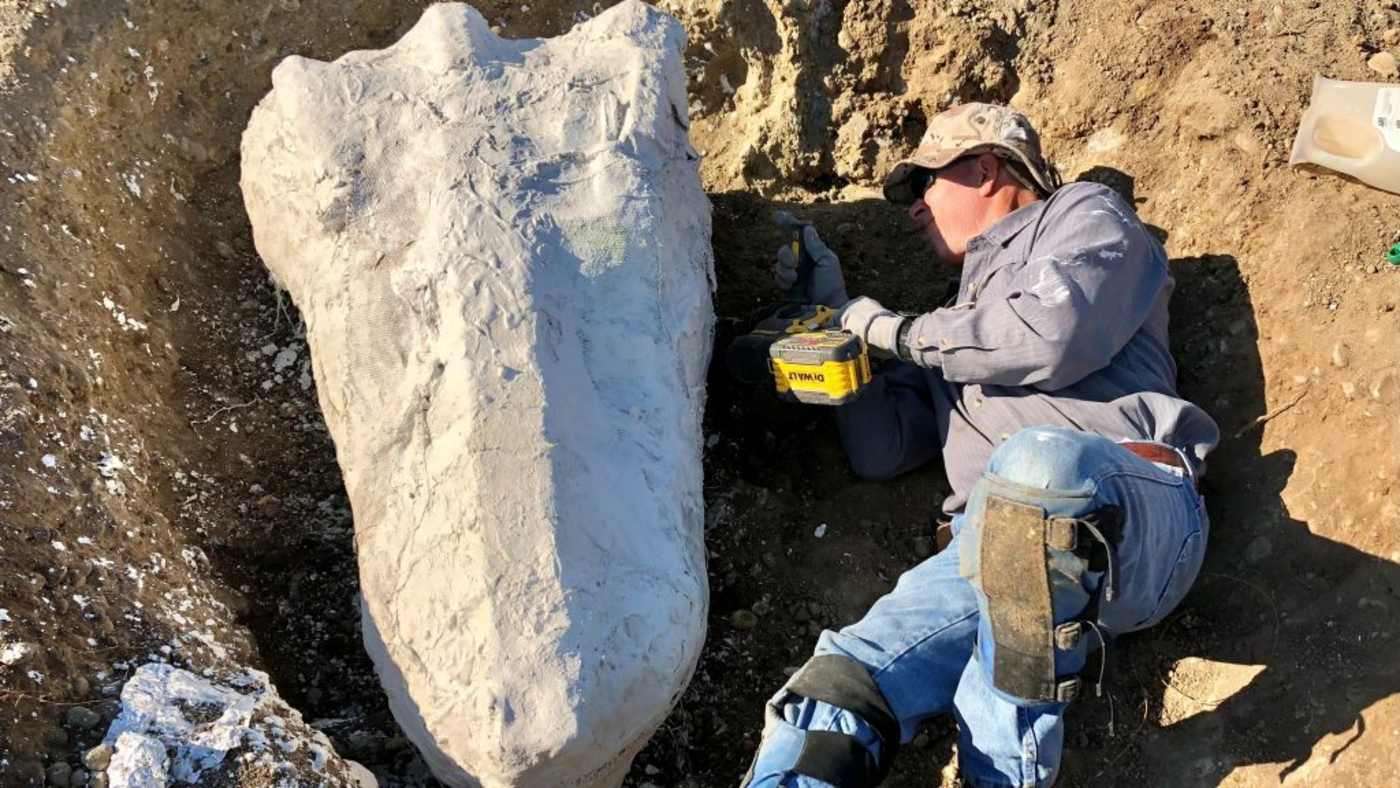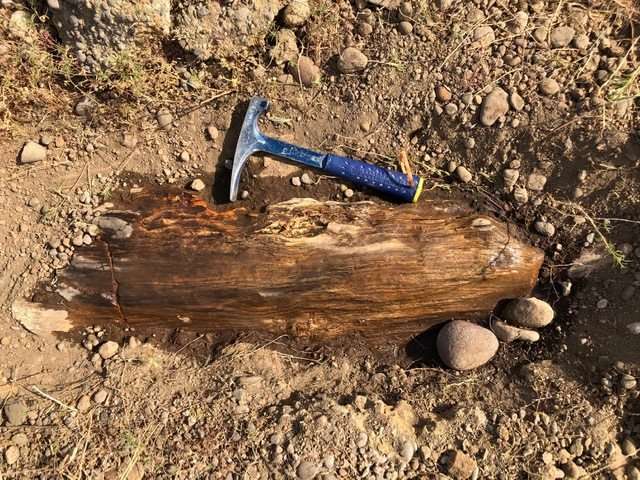Giant Rhinoceros Skeleton Found in China - One of the Largest Land Mammals Ever (Look)
The skeleton of a new species of paraceratherium, or giant rhinoceros, is one of the largest land mammals ever recorded.

One of the biggest California fossil discoveries ever made has been found to include the remains of ancient mastodon, fish, and other mammals.
Encased amid the fossilized remains of a petrified forest, they were discovered by a local government ranger in the Mokelumne River watershed south east of Sacramento—and are now making headlines around the world of paleontology.
Thought to be from the Miocene Era of around 10 million years ago, ranger Greg Francek at the East Bay Municipal Utility District was in the area for work when he found the first fossilized tree, half buried in the soil.

"I looked around the area further and I found a second tree," Francek said in an EBMUD statement released this week. "And then a third and so on. After finding dozens of trees I realized that what I was looking at was the remains of a petrified forest."
After millions of years, forests and trees buried in the ground become "petrified" or turned to minerals; coming from the Greek word "petra" which means stone. There are 19 petrified forests in the U.S., ranging in size from merely stands of trees to national park-sized forests.
It took three weeks of surveying the area for Francek to find his first vertebrate fossil; a piece about twice as big as his folding knife, broken in three places.
"What I didn't comprehend at the time [of the initial find]" he said, "was the amazing fact that I was looking at the bones of great beasts that had roamed this landscape millions of years ago."
Francek then reached out to every geology and paleontology expert in the area as fast as he could. Soon a team arrived from California State University, Chico, to begin excavating the fossils.
The bones of two elephant cousins, camel, rhino, horses, tortoises, and even a toothed-salmon weighing 400 pounds were all subsequently discovered there in what is one of the largest single discoveries in the state's history.
Most charismatic of Francek's ‘Great Beasts' was undoubtedly the complete skull of an American mastodon with all its teeth and magnificent tusks intact—the first discovery in the area since 1947. Needing over four days of work and eight people to load it into a truck, the two-tusked mastodon roamed Earth more than 10 million years ago before becoming extinct during the Pleistocene, just 12,000 years ago.

A gomphothere was also discovered—a shorter cousin to the mastodon that sported four tusks, but that died out around 6 million years ago. It's massive jaw required the assistance of a backhoe to heave it from the ground.
Beyond this pair of tusked-titans, remains of merychippus, the three-toed progenitor of the modern horse, tapirs, single-hump camels, and even rhinoceros were all discovered there as well. One of the most challenging excavations was a Miocene salmon species, that judging by the skeleton, which was equipped with a mouth full of teeth, and could reach 400 pounds.
Both state and federal government protections for the area have kicked in since its discovery, and the next step in the story is to try and parse out the classic scientific questions: why are the finds there, and how did they die.
You can learn more at EDMUD and Chico University, who both have excellent reports with stunning images of the finds.
SHARE the Astonishing Finds From California With Pals…
Be the first to comment